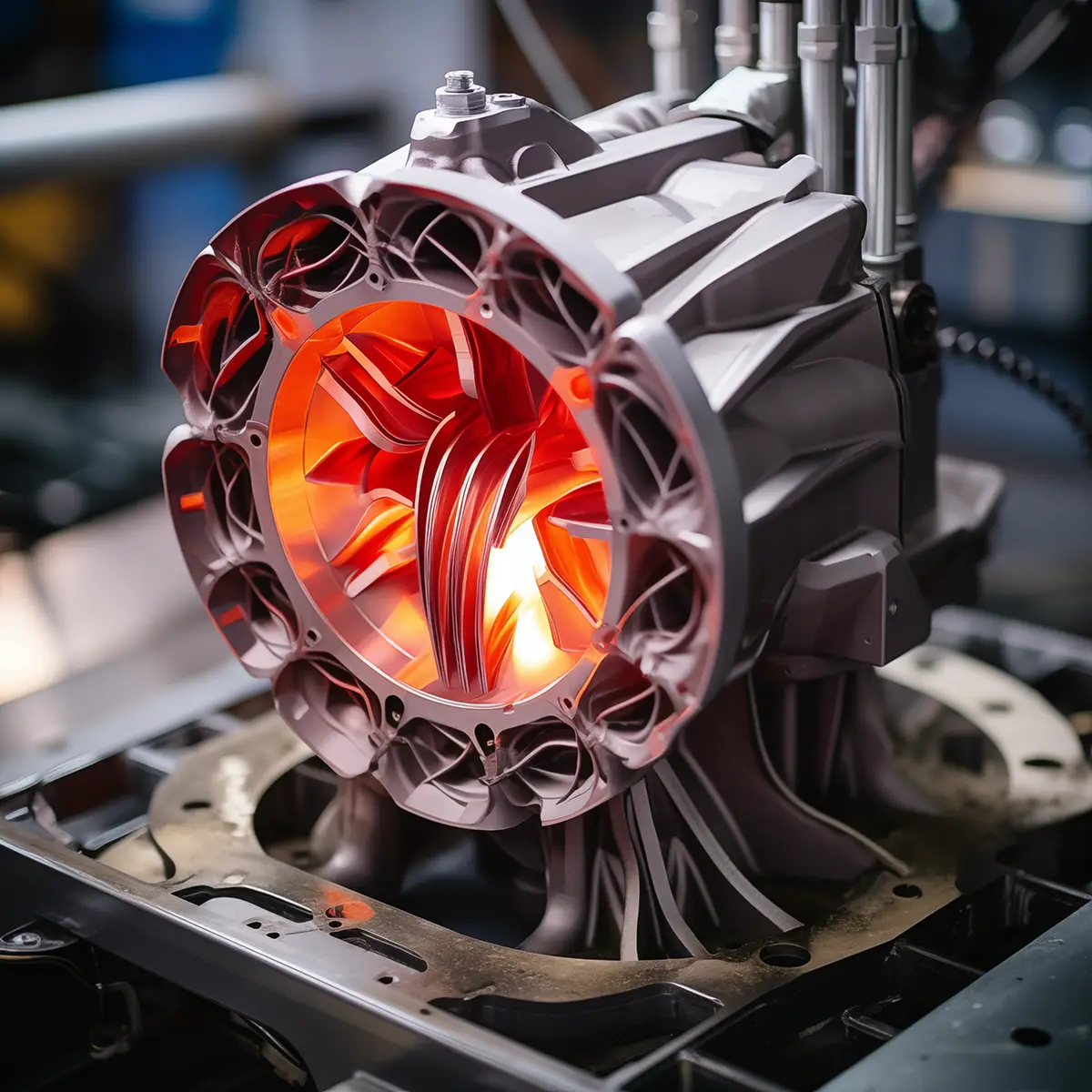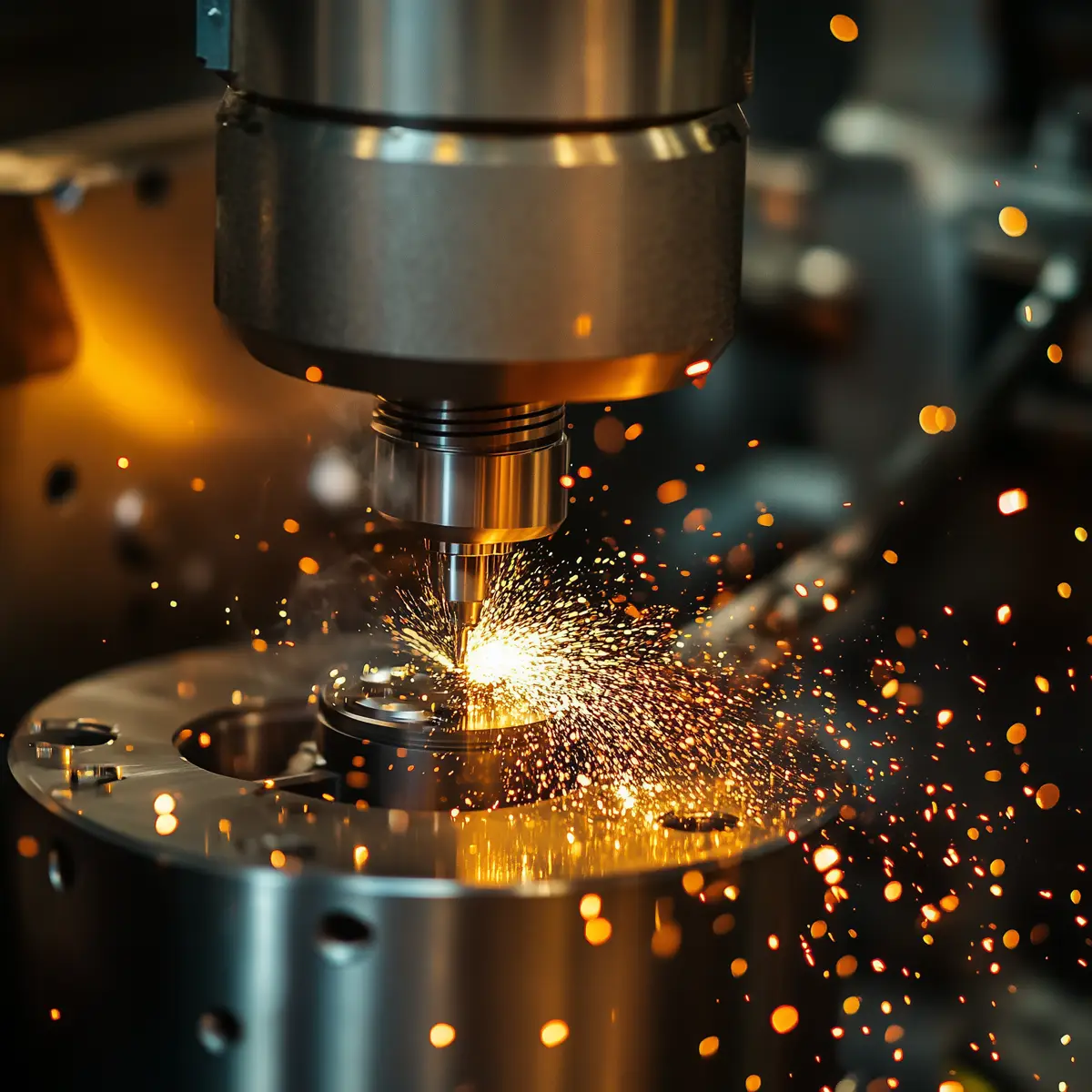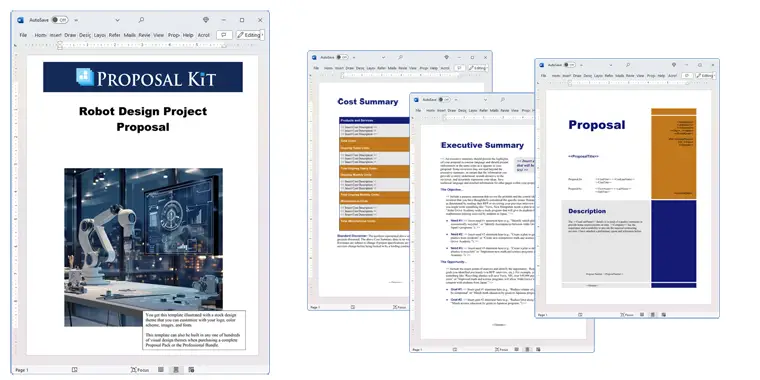How to write your Robot Design Project Proposal
We include this 26 page layout with every Proposal Pack. If you want this template to have a different visual design theme than the one illustrated here, purchase any Proposal Pack design and create this template using the purchased design theme. This template is included in every Proposal Pack. If you get a Proposal Pack or the Professional, you can also make any variation of this template with different chapters to suit your needs.
We typically include more chapters in the templates than most people will need to give everyone more variety in the chapters they may need. You can trim down a long template by removing pages you do not need or combining multiple chapter topics into one page.
 DOWNLOADABLE, ONE-TIME COST, NO SUBSCRIPTION FEES
DOWNLOADABLE, ONE-TIME COST, NO SUBSCRIPTION FEESYou can also create countless variations of this document to suit your needs using the included library of 2200+ chapters if ordering a Proposal Pack or Professional.
 What Our Clients Say
What Our Clients SayWhen I had the chance to use the Contract Pack, I jumped on it because I used Proposal Pack and Proposal Pack Wizard on a weekly basis. It’s the most phenomenal software I have ever seen for writing proposals which is a huge part of my business."
Related Article
Related Video
Related Templates
- 3D Printing and Prototyping Services Proposal
- Robotics Automation Project Proposal
- Prototyping, Fabrication and Machining Services Proposal
- Industrial Design Project Proposal
- Prototyping and Product Design Proposal
- Artificial Intelligence Project Funding Proposal
- Welding and Fabrication Services Proposal
- Machining Services Proposal
- AI Powered Domestic Manufacturing Proposal Template
- Autonomous Vehicle Regulations Proposal
- Collaborative Robotics Manufacturing Proposal Template
- Advanced Manufacturing Proposal Template
- Electrical Engineering Project Proposal
- Intelligent Factory Reshoring RFP Template
- Prototyping Fabrication and Machining Services Proposal
- Software Automation Proposal
- Modeling and Simulation Proposal Template
- Reusable Component Design Proposal
- Software and Hardware System Proposal
- Advanced Robotics Integration Proposal Template
What's the best way to write your robot design project proposal?
Creating a robot design proposal can be a challenging task, but using the Proposal Kit software and template library offers a proven solution. This comprehensive tool not only provides templates to structure your proposals but also incorporates a line item quoting database system for cost summaries, quotes, estimates, budgets, and other financial topics. This feature ensures that your proposal is both detailed and accurate, setting the stage for winning bids and contracts.
Do you need to write a proposal for designing and building an autonomous robot? If so, the Proposal Kit is designed for you.
What Types of Projects Are Robot Design Project Proposals Written For?
Robot design proposals are important for various types of projects where innovation and technology converge. These proposals are written for situations such as:
- Developing an autonomous delivery robot for urban environments
- Designing a robotic arm for manufacturing processes
- Building an agricultural robot for crop monitoring and harvesting
- Creating a security robot for surveillance purposes
- Constructing a healthcare robot for patient interaction and monitoring
- Engineering a robot for underwater exploration and research
- Developing a humanoid robot for educational purposes
- Designing a robot for disaster response and recovery
- Building a robotic vacuum for household cleaning
- Creating a robot for space exploration missions
- Constructing a robotic assistant for elderly care
- Engineering a robot for autonomous vehicle testing
- Developing a robotic barista for coffee shops
- Designing a robot for automated warehouse logistics
- Building a robot for environmental monitoring and data collection
- Creating a robotic pet for companionship
- Constructing a robot for interactive museum exhibits
- Engineering a robot for precision agriculture techniques
- Developing a robot for smart home automation
- Designing a robot for customizable entertainment experiences
Chapters this template is built with
There is no one-size-fits-all premade template for a robot design proposal. However, the Proposal Kit software allows you to create custom variations of templates that can cover all situations. Here are some of the chapter templates from the Proposal Kit's extensive library that can be customized to fit your needs:
Cover Letter
A Cover Letter sets the stage for your proposal, introducing your company and summarizing the key points of your robot design project. When used in a robot design project, this Word format document can be used to highlight your company's unique capabilities in robotics, establish a professional rapport with potential clients, and provide a brief introduction to the innovative solutions your robot design will offer.
Introduction
The Introduction provides a brief overview of the project, including its objectives and scope. For a robot design proposal, this section should clearly define the problem your robot aims to solve or the opportunity it seeks to exploit, outline the project goals, and set the stage for the rest of the proposal. It should engage stakeholders by presenting how the project aligns with their needs or interests.
Executive Summary
The Executive Summary offers a concise version of the entire proposal, highlighting the main points and benefits. It should capture the essence of your robot design project, summarizing the problem, solution, key features, benefits, and financial topics. This snapshot allows busy stakeholders to quickly understand the value proposition of your project, motivating them to look further into the proposal.
Cost Summary
A Cost Summary outlines the financial topics of the project, detailing costs, budgets, and estimated expenses. This section is vital for a robot design proposal as it provides transparency into the financial investment required. It should include a breakdown of costs related to design, development, materials, labor, and any other pertinent financial details to help clients understand the project's value in monetary terms.
Getting Started
The Getting Started chapter provides a roadmap for initiating the project, including timelines, milestones, and initial steps. For a robot design project, this section should assure clients of your preparedness and organized approach by outlining the initial project phases, key milestones, and a timeline for deliverables, demonstrating a clear path from concept to execution.
Features
The Features section lists the key functionalities and characteristics of the proposed robot, illustrating its capabilities and advantages over existing solutions. This chapter should detail how the robot's features address specific client needs, enhance efficiency, or provide a competitive edge, showcasing the innovation and uniqueness of your design.
Project Deliverables
Project Deliverables define the tangible outcomes and products that will be provided upon project completion. In a robot design proposal, this section should specify what the client can expect to receive, such as prototypes, documentation, test results, and the final robot, helping manage expectations and ensuring accountability.
Navigation
The Navigation chapter details the movement and control topics of the robot, explaining how it will maneuver and operate within its intended environment. This section should describe the technologies and systems that enable the robot's navigation, such as pathfinding algorithms, GPS integration, or autonomous movement capabilities, emphasizing its adaptability and precision.
Remote Control
Remote Control functionality describes how the robot can be operated from a distance, highlighting its versatility and adaptability in various situations. In your proposal, outline the remote control technologies used, such as wireless communication protocols or user interfaces, and how they enhance the robot's usability and operational range.
Mobility
Mobility covers the robot's ability to move, including its speed, range, and adaptability to different terrains or environments. This section should detail the design topics that contribute to the robot's mobility, such as wheel or track systems, joint flexibility, or energy efficiency, showcasing its ability to perform in diverse conditions.
Instruments
Instruments refer to the tools and devices integrated into the robot for specific tasks, such as cameras, sensors, or manipulators. In the proposal, describe the purpose and function of each instrument, and how their integration enhances the robot's capabilities and aligns with the project's objectives.
Sensors
Sensors detect and respond to environmental stimuli, enabling the robot to interact with its surroundings and collect data. This section should explain the types of sensors used, their placement, and their role in the robot's operations, emphasizing their contribution to the robot's intelligence and functionality.
Hardware and Software
The Hardware and Software section outlines the technical components and systems required for the robot's operation, ensuring compatibility and efficiency. Describe the hardware platforms, software frameworks, and integration strategies used to create a seamless operational system for the robot, highlighting any proprietary technologies or innovations.
Components
Components refer to the individual parts and materials used to build the robot, detailing their specifications and roles in the overall design. This chapter should provide a detailed bill of materials, explaining the selection of specific components based on performance, durability, and cost considerations.
Robotics
The Robotics chapter provides an overview of the technologies and methodologies employed in the robot's development, showcasing your expertise. Highlight the engineering principles, robotic systems, and development processes used to create the robot, demonstrating your technical proficiency and innovation.
3-D Printing
3-D Printing technology is used for creating precise parts and prototypes, enabling rapid iterations and customizations in the robot's design. Discuss how 3-D printing is used in the project for prototyping, testing, or producing final components, emphasizing its role in reducing development time and costs.
Specifications
Specifications define the technical criteria and standards that the robot must meet, ensuring consistency and quality. In your proposal, list the performance benchmarks, compliance requirements, and industry standards the robot adheres to, assuring clients of its reliability and excellence.
System Requirements
System Requirements list the necessary hardware, software, and environmental conditions needed for the robot to function. This section should specify the infrastructure or resources required to support the robot's operation, ensuring that clients understand any dependencies or prerequisites.
Performance Requirements
Performance Requirements describe the expected capabilities and benchmarks the robot must achieve, such as speed, accuracy, or endurance. Outline the key performance indicators and testing criteria used to measure the robot's success, providing confidence in its ability to meet project goals.
Monitoring
Monitoring involves the ongoing assessment and analysis of the robot's performance and condition, ensuring reliability and safety. Highlight the monitoring systems and processes in place to track the robot's status, identify issues, and perform maintenance, emphasizing your commitment to quality control.
About Us
The About Us section introduces your company, highlighting your experience, achievements, and dedication to quality in robot design projects. Use this section to build trust by showcasing your company's history, expertise in robotics, and successful past projects, positioning you as a leader in the industry.
Team Members
Team Members profiles highlight the expertise and roles of key individuals involved in the project, showcasing the strength of your team. Provide brief bios and credentials of your team members, emphasizing their skills, experience, and contributions to the project, reinforcing your proposal's credibility.
Schematics
Schematics provide detailed diagrams and blueprints of the robot's design, offering a visual representation of its structure and components. Include detailed drawings and CAD models that illustrate the robot's architecture, allowing clients to visualize the design and understand its complexity and engineering.
Use cases for this template
Innovative Solutions to Cost Management in Urban Delivery Robotics
The Challenge
At Tech Innovators Co., Harper was at the forefront of a project to design a cost-effective urban delivery robot. The challenge lay in convincing a potential client, wary of budget overruns, that the project was financially viable. With resource costs climbing, Harper had to find a way to present a case for budget efficiency without sacrificing quality.
The Solution
Recognizing the need for a detailed financial strategy, Harper turned to the Proposal Kit. This tool became integral in creating a comprehensive financial breakdown. By showcasing projected savings and efficiencies, Harper could illustrate how the robot's design was not only innovative but also economically feasible. The template allowed Harper to detail every financial topic, presenting a clear picture of budget allocation and potential savings.
The Implementation
Using the Proposal Kit, Harper was able to highlight specific strategies for cost reduction. Emphasizing the use of 3-D printing for cost-effective prototyping and sourcing high-quality yet economical sensors, Harper created a proposal that was both comprehensive and financially sound. The structured template enabled Harper to seamlessly integrate these cost-saving measures into the proposal, ensuring that every dollar was accounted for with precision.
The Outcome
The client, initially skeptical about the financials, was swayed by the clear and well-substantiated cost estimates. Impressed with the clear demonstration of budget management, the client green-lighted the project. Harper's adept use of the Proposal Kit not only secured the bid but also established a streamlined budgeting process for Tech Innovators Co., setting a new standard for project proposals within the company.
Navigating Tight Schedules with Efficient Proposal Writing
The Challenge
At Smart Logistics Inc., Jamie was faced with the challenging task of writing a proposal for a internal project aimed at automating warehouse logistics. The challenge was exacerbated by an extremely tight deadline, leaving little room for error. Jamie needed to create a comprehensive and compelling proposal swiftly, without sacrificing quality or critical detail.
The Solution
Jamie sought the assistance of Proposal Kit's extensive library of templates, which offered a framework for rapid proposal development. To further expedite the process, Jamie used an AI writing tool. This innovative approach allowed Jamie to use AI prompts to extract relevant content from the company's website, ensuring that the proposal was rich in company-specific information and aligned with the project's objectives.
The Implementation
By integrating the AI tool with Proposal Kit's templates, Jamie efficiently assembled the necessary proposal sections. The Introduction and Executive Summary were drafted with precision, incorporating key data and insights gleaned from the AI analysis. This combination of technology and structured templates ensured that all important information was included, creating a proposal that was both detailed and coherent.
The Outcome
Jamie successfully completed the proposal well before the deadline, impressing Smart Logistics Inc.'s management team with the speed and thoroughness of the work. This efficiency not only met the immediate needs of the project but also set a precedent for future proposals within the company. The project rollout proceeded smoothly and on schedule, thanks to Jamie's innovative approach to proposal writing.
Creating Comprehensive RFPs for Educational Robotics
The Challenge
At RoboEd Foundation, Alex faced the task of preparing a Request for Proposals (RFP) to invite companies to design an educational robot. The aim was to enhance learning experiences through interactive robotics, a project requiring clear articulation of technical and educational expectations to ensure that the chosen vendor would align with the foundation's educational goals.
The Solution
Alex used Proposal Kit to develop a detailed and comprehensive RFP. By customizing templates to match the specific requirements of educational robotics, Alex ensured that potential vendors were provided with a clear understanding of the project's aims and expectations. This customization allowed Alex to address all necessary criteria and create an RFP that was both informative and precise.
The Implementation
Using templates such as Specifications and Performance Requirements from Proposal Kit, Alex detailed the foundation's needs. This approach ensured that the RFP clearly communicated the educational focus and technical standards expected of the bidders. By laying out these requirements in a structured format, Alex facilitated a seamless evaluation process for the foundation.
The Outcome
As the RFP was disseminated, it drew interest from several competitive vendors, each innovative solutions for educational robotics. Alex's well-written RFP, developed using Proposal Kit, allowed the foundation to conduct a thorough selection process, ultimately choosing a partner whose vision and capabilities aligned perfectly with RoboEd Foundation's educational goals. The selected vendor's approach promised to transform the landscape of educational robotics within the foundation, setting a new benchmark for future projects.
Conclusions and Recommendations
Creating a robot design proposal is made significantly more manageable and effective with the use of Proposal Kit. From understanding the types of projects that require such proposals to customizing relevant chapters, Proposal Kit provides the tools necessary to tackle varied challenges and secure successful outcomes. Whether you're addressing budget concerns, meeting tight deadlines, or writing comprehensive RFPs, Proposal Kit ensures that your proposal is professionally created and sound.
Also Known As
This template may also be referred to in different ways or be used in more specialized situations, such as:
- Autonomous Robot Proposal
- Robotics Development Plan
- Robot Project Proposal
- Automated System Design Proposal
- AI Robotics Proposal
- Machine Design Proposal
- Robotics Engineering Proposal
- Automated Technology Proposal
- Robotics Bid Proposal
- Intelligent Machine Proposal
Abstract
 Designing a successful robot project proposal is integral to advancing technology and achieving cost savings in various fields, from service robots in healthcare to automated systems in manufacturing. A well-written proposal clearly defines the main goal and methods, laying out how the project will achieve obstacle avoidance and incorporate reinforcement learning for robust performance. Team roles and responsibilities are crucial in determining the success of the project, as they allow workers to manage tasks and provide valuable feedback.
Designing a successful robot project proposal is integral to advancing technology and achieving cost savings in various fields, from service robots in healthcare to automated systems in manufacturing. A well-written proposal clearly defines the main goal and methods, laying out how the project will achieve obstacle avoidance and incorporate reinforcement learning for robust performance. Team roles and responsibilities are crucial in determining the success of the project, as they allow workers to manage tasks and provide valuable feedback.
The Proposal Kit software offers tools important for writing proposals with precision, featuring complex document assembly and automated line-item quoting, which streamline the process of evaluating costs and resources. Through this, operators and engineers can expand their knowledge and predict project outcomes more accurately. By emphasizing equipment and components, such as sensors and mobility mechanisms, the proposal ensures the robot design is capable and aligns with industry standards.
Training modules can be included to prepare team members, while sections detailing system requirements and performance benchmarks break down the necessary technical specifics. Engaging stakeholders through a comprehensive introduction and executive summary allows for a clearer context of the project's value compared to other solutions. Ultimately, a well-structured proposal fosters hope for successful implementation and aligns with the client's vision, addressing potential obstacles and minimizing accidents in execution. In this generation of technological advancement, striving for excellence in project proposals sets the foundation for innovative robotic solutions that assist humans in various environments.
 Expanding on the role of a robot design project proposal, it is vital to recognize its impact on diverse sectors where innovation meets practicality. These proposals are instrumental in determining project viability by evaluating technical and financial topics, ensuring that each robot is not only functionally advanced but also economically feasible. A well-structured proposal can significantly enhance the decision-making process for stakeholders, providing a comprehensive view of the project's scope and expected outcomes.
Expanding on the role of a robot design project proposal, it is vital to recognize its impact on diverse sectors where innovation meets practicality. These proposals are instrumental in determining project viability by evaluating technical and financial topics, ensuring that each robot is not only functionally advanced but also economically feasible. A well-structured proposal can significantly enhance the decision-making process for stakeholders, providing a comprehensive view of the project's scope and expected outcomes.
The Proposal Kit facilitates this process by offering a user-friendly interface and extensive content libraries, empowering teams to create detailed and engaging proposals. By clearly outlining team roles and training requirements, the documents generated using the Proposal Kit ensure that every person involved understands their responsibilities, thus fostering a collaborative environment. This clarity allows teams to focus on the power of innovation, striving to overcome challenges such as tackling complex objects and navigating intricate environments.
Furthermore, a well-articulated proposal can engage stakeholders by presenting the project's potential in an appropriate manner. Through its web-based resources and structured templates, Proposal Kit not only aids in writing documents but also helps convey the vision to clients, ensuring alignment and buy-in. As teams evaluate and iterate on their designs, the ability to adapt and incorporate feedback is crucial, allowing for continuous improvement and alignment with client needs.
 In summary, the effective use of Proposal Kit in creating robot design proposals helps teams note critical insights, address potential challenges, and leverage their collective expertise to deliver innovative solutions. By doing so, they enhance the likelihood of project approval and successful implementation, ultimately contributing to advancements in robotics that benefit both industry and society.
In summary, the effective use of Proposal Kit in creating robot design proposals helps teams note critical insights, address potential challenges, and leverage their collective expertise to deliver innovative solutions. By doing so, they enhance the likelihood of project approval and successful implementation, ultimately contributing to advancements in robotics that benefit both industry and society.
In the field of creating robot design proposals, determining the best approach is key to securing stakeholder approval and driving innovation forward. Proposals serve as the foundation upon which ambitious projects are built, detailing every topic, from technical specifications to financial projections. The Proposal Kit plays a role in this process, offering structured templates that guide teams through the complexities of proposal writing with efficiency and precision.
Through its comprehensive content library, Proposal Kit assists teams in systematically evaluating project requirements and potential outcomes. This process helps to ensure that all topics of the design are considered, allowing teams to make informed decisions about resource allocation and technology integration. As teams strive to meet and exceed project goals, the clarity and organization provided by the Proposal Kit can be invaluable, fostering a sense of confidence and purpose.
 Moreover, the act of writing a proposal encourages teams to strive for excellence, pushing the boundaries of what is technically feasible. It challenges them to think creatively about solutions that address client needs and industry challenges. By setting clear objectives and outcomes, proposals not only outline the path forward but also inspire teams to reach new heights of innovation.
Moreover, the act of writing a proposal encourages teams to strive for excellence, pushing the boundaries of what is technically feasible. It challenges them to think creatively about solutions that address client needs and industry challenges. By setting clear objectives and outcomes, proposals not only outline the path forward but also inspire teams to reach new heights of innovation.
In conclusion, the process of creating a robot design proposal, supported by the structured approach of the Proposal Kit, enables teams to determine the best strategies for success. It cultivates a culture of striving for excellence, ensuring that projects not only meet initial expectations but also deliver groundbreaking solutions that advance the field of robotics.
Frequently Asked Questions
What are the important components of a robot design proposal?
When creating a robot design proposal, it's crucial to include several key components to ensure clarity and comprehensiveness. Start with a Cover Letter to introduce your company and establish a professional tone. Follow with an Introduction that outlines the project's objectives and scope. An Executive Summary is important for providing a concise overview of the proposal's main points. Don't forget to include a Cost Summary that details financial topics like costs, budgets, and estimated expenses. Lastly, sections like Project Deliverables, Features, and Specifications help define the project's expected outcomes and technical criteria, ensuring that all stakeholders have a clear understanding of what the project entails.
How can I communicate the benefits of my robot design project?
To communicate the benefits of your robot design project in the proposal, focus on highlighting its unique features and advantages over existing solutions. Use the Features section to detail what sets your robot apart and how it meets or exceeds client needs. The Executive Summary should succinctly convey the project's overall value proposition. Furthermore, incorporating visual aids like diagrams in the Schematics section can help illustrate complex ideas more clearly. By ensuring that each section of your proposal reinforces the robot's benefits, you make a case for why your design should be chosen.
What strategies can I use to make my robot design proposal stand out?
Making your robot design proposal stand out involves presenting a well-organized and visually appealing document that clearly articulates your ideas. Customizing templates from Proposal Kit allows you to tailor the proposal to specific project requirements, enhancing its relevance. Pay particular attention to the Executive Summary and Cost Summary, as these sections are often the first that stakeholders will review. Additionally, use real-world examples or case studies in sections like About Us and Team Members to demonstrate your experience and capabilities. Highlighting innovative features in the Features and Project Deliverables sections further showcases the uniqueness of your proposal.
How detailed should the technical specifications be in my robot design proposal?
The level of detail in the technical specifications of your robot design proposal should be sufficient to convey the project's scope and requirements without overwhelming the reader. In the Specifications section, describe the key technical criteria and standards that the robot must meet. Use clear and concise language to explain complex concepts, and consider including diagrams or charts in the Schematics section for visual clarity. This balance between detail and simplicity ensures that stakeholders can easily comprehend the technical topics and see the feasibility of your design.
How do I handle budgeting and financial details in a robot design proposal?
Handling budgeting and financial details in a robot design proposal requires transparency and precision. The Cost Summary section should provide a comprehensive breakdown of all projected expenses, including materials, labor, and overhead costs. Using Proposal Kit's line item quoting database can enhance accuracy in these estimates. Make sure to explain any assumptions or contingencies factored into the budget and discuss potential cost-saving measures. Presenting a clear financial picture helps build trust with your clients and demonstrates your project's financial viability.
20% Off Discount
![]() Add To Cart This Word Template
Add To Cart This Word Template
 Add To Cart Proposal Pack for Any Business
Add To Cart Proposal Pack for Any Business
 Add To Cart Proposal Kit Professional
Add To Cart Proposal Kit Professional
 4.7 stars, based on 849 reviews
4.7 stars, based on 849 reviewsProposal Kit chapters used in this template
Cover Letter, Title Page, Table of Contents, Introduction, Executive Summary, Robotics, Features, Remote Control, Navigation, Mobility, Instruments, Sensors, Hardware and Software, Components, 3-D Printing, Monitoring, System Requirements, Performance Requirements, Specifications, Project Deliverables, Schematics, Cost Summary, Getting Started, About Us, Team Members, Back Page
Line Item Automated Chapters
If you purchase a Proposal Pack or the Professional Bundle, these proposal pages are generated using an automated line-item database in the included Wizard software.
Cost Summary
You use this proposal for
- General business proposal
- Technical proposal
- Project pitch proposal
- RFP response
- IT, software, hardware proposal
- Military proposal
- Aerospace proposal
How to create this template with Proposal Pack Wizard
You can create this document using any of the logo-designed Proposal Packs. Pick any Proposal Pack with a logo design theme you like best; they will all work equally well. The Proposal Pack for Any Business is the pack with no extra added logos or colors - designed to be used plain or for you to customize with your logos and graphics.
The Proposal Pack design theme you purchase will determine the visual look of this template. The screenshot above only shows the plain generic design theme.
We include a library of chapters to be assembled based on your needs. All proposals are different and have different needs and goals. We designed Proposal Pack so you can customize the documents to suit your needs.
You will best create this document using the Proposal Pack Wizard - Expert Edition software to select this template and build it in the Proposal Pack logo design theme of your choice along with any desired customizations (such as adding additional chapters, removing unneeded chapters, changing the order of chapters, and importing your company logo). This template outlines a proposal for the described situation. Each user is responsible for typing in the actual content of the provided pages with their information to complete the proposal. Suggestions in the abstract may include features in higher-end packages and are facilitated by the selection of chapter templates to support the narrative of each proposal, which help guide the user in filling in the details.
The Wizard software's AI Writer will write the content of the pages of the template based on details provided for your company, client, project, financial details and other writing instructions. This will provide a personalized version of the template completely written and ready to edit.
Once finished, the AI Writer's Word-to-PowerPoint converter can transform your proposal, business plan, or other business documents into a PowerPoint slideshow. Save time and effort by letting the AI analyze every chapter to condense its content into talking points, visually matching the document, and providing a consistent package of presentation material with the click of a button.
You create this template using the Wizard software with an entire Proposal Pack library and software. We include the Expert Edition of the software in the Proposal Kit Professional. Microsoft Word for Windows is required to use the customizing software. You can also edit Word document templates in other office software such as Word for Mac. We will assist Mac users in assembling complex templates for their first project if they do not have the required platform to run the Wizard software.
How to Build Templates Featured on Proposal Kit Website
Many people find the Proposal Kit website after searching for a specific proposal. Once you've purchased and installed the software, how do you build that template you found in the first place? This video shows you how to build any proposal you see on the Proposal Kit website.
 Ian Lauder has been helping businesses write their proposals and contracts for two decades. Ian is the owner and founder of Proposal Kit, one of the original sources of business proposal and contract software products started in 1997.
Ian Lauder has been helping businesses write their proposals and contracts for two decades. Ian is the owner and founder of Proposal Kit, one of the original sources of business proposal and contract software products started in 1997.By Ian Lauder
 Published by Proposal Kit, Inc.
Published by Proposal Kit, Inc.


 Cart
Cart
 Get 20% off ordering today:
Get 20% off ordering today: 


 Facebook
Facebook YouTube
YouTube Bluesky
Bluesky Search Site
Search Site